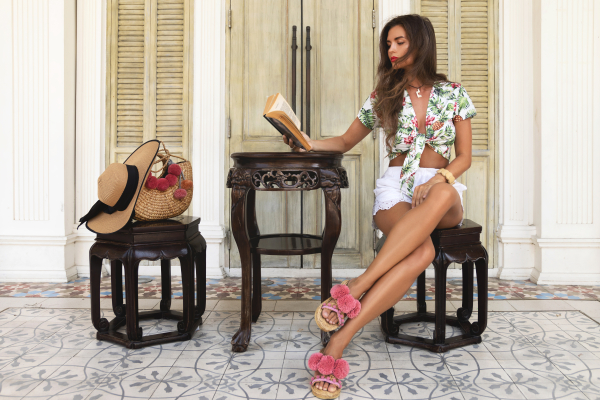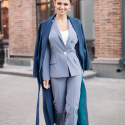Mastering Color Coordination in Fashion: Essential Rules and Tips
 Color coordination plays a vital role in fashion, influencing how outfits are perceived and how they express personal style. Understanding how to combine colors effectively can elevate your wardrobe and enhance your overall appearance. Here’s a detailed guide to mastering color coordination and applying it to your outfits.
Color coordination plays a vital role in fashion, influencing how outfits are perceived and how they express personal style. Understanding how to combine colors effectively can elevate your wardrobe and enhance your overall appearance. Here’s a detailed guide to mastering color coordination and applying it to your outfits.1. The Fundamentals of Color Theory
To start with, grasp the basics of color theory:
Primary Colors: Red, blue, and yellow are the primary colors. They form the basis of all other colors.
Secondary Colors: Created by mixing two primary colors. For example, orange, green, and purple.
Tertiary Colors: Result from combining a primary color with a secondary color, producing hues like teal and magenta.
2. Understanding the Color Wheel
The color wheel is a helpful tool for coordinating colors:
Complementary Colors: Opposite each other on the wheel, such as blue and orange. They create high contrast and vibrant combinations.
Analogous Colors: Located next to each other, like blue, blue-green, and green. These combinations are harmonious and pleasing to the eye.
Triadic Colors: Equally spaced around the wheel, such as red, blue, and yellow. They offer a balanced yet vibrant palette.
3. Applying the 60-30-10 Rule
This rule helps in creating visually appealing outfits:
60% Dominant Color: Choose a primary color for the majority of your outfit, like a dress or suit.
30% Secondary Color: Add a complementary or analogous color in the form of accessories or a secondary clothing item, such as a belt or jacket.
10% Accent Color: Incorporate a bold or contrasting color through accessories like shoes or jewelry to add a pop of interest.
4. Matching Patterns and Colors
When combining patterns with colors, consider the following:
Balance Patterns with Solids: Pair patterned items with solid-colored pieces to avoid overwhelming the eye.
Use Color as a Unifying Element: Choose colors from the patterns to match your solid pieces, creating a cohesive look.
Mixing Patterns: If you choose to mix patterns, ensure they vary in scale or type to maintain visual interest without clashing.
5. Seasonal Color Coordination
Adjust your color choices according to the season:
Spring/Summer: Opt for light, bright colors and pastels. Think of shades like mint green, coral, and sky blue.
Autumn/Winter: Embrace deeper, richer tones such as burgundy, forest green, and navy. These colors complement the cooler weather and enhance warmth.
6. Understanding Personal Color Palettes
Your personal color palette can significantly impact your style:
Skin Tone: Determine whether your skin tone is warm, cool, or neutral to select colors that enhance your complexion.
Hair and Eye Color: Choose colors that complement your natural features for a harmonious and flattering look.
Experiment: Don’t be afraid to try different shades and tones to discover what works best for you.
7. Utilizing Color in Accessories
Accessories are a powerful way to experiment with color:
Scarves and Jewelry: Use these to introduce new colors into your outfits without overwhelming your look.
Shoes and Bags: Opt for statement pieces that can either match or contrast with your main outfit, adding dimension and interest.









